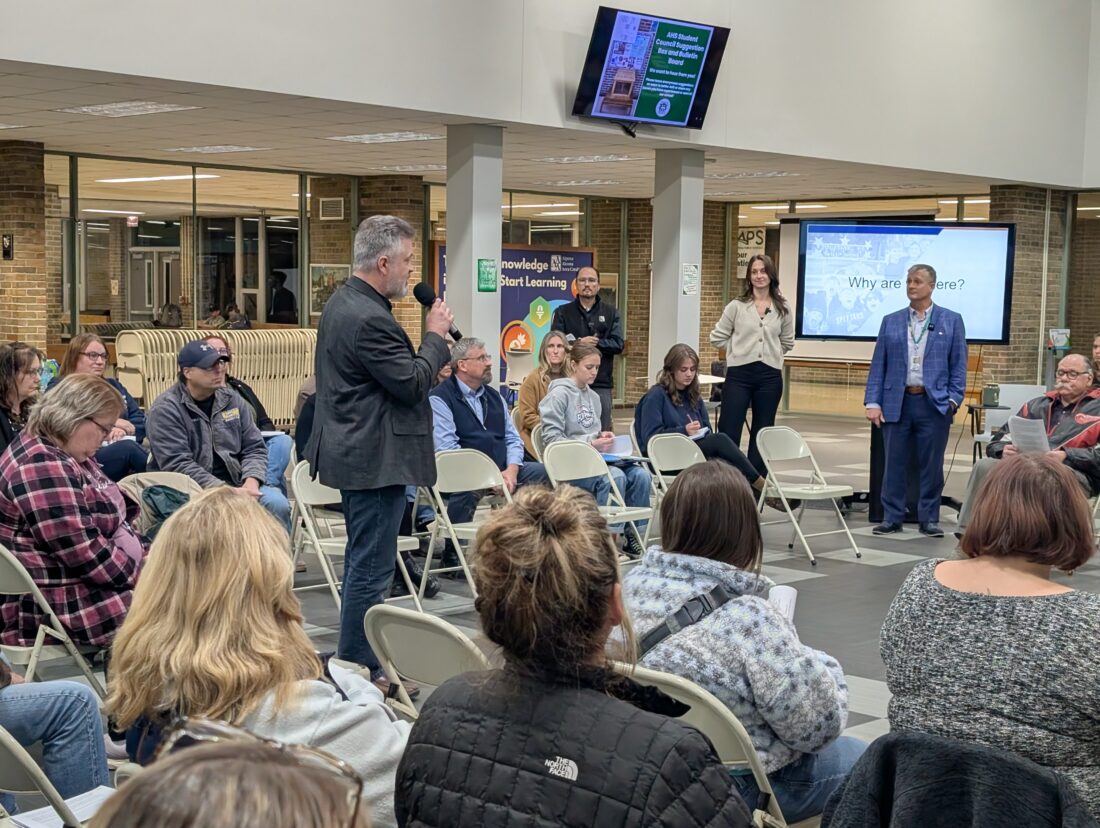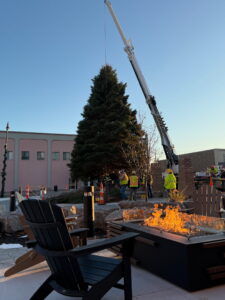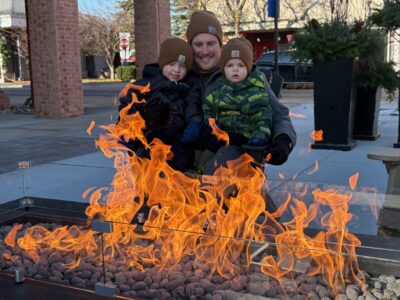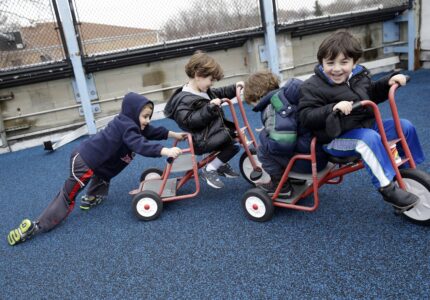Community questions APS facilities plan

News Photo by Reagan Voetberg A sizable crowd of teachers, parents, students, and community members attended the community forum on reimagining the future of Alpena Public Schools facilities on Wednesday.
ALPENA — The community joined in the ‘reimagining our future” discussion of Alpena Public Schools facilities on Wednesday night.
For the past six months, President Rob Atkins and Project Director Laura Casai from the architecture company KingScott have conducted a study on the use of facilities at APS, seeking to address issues like decreasing enrollment and long bus routes.
On Wednesday, community members joined in the discussion about the future of APS and the two proposed plans from KingScott, which if ever implemented, could lead to at least one school being closed.
Brandie Gapske, an instructional coach at APS, has been working in the district for nearly 30 years, she said. She was a teacher when Maple Ridge and Long Rapids schools closed.
“It seemed very quick,” she said. “It seemed like, ‘we’re in a lot of trouble, we need to make a decision right now.'”
Gapske said there didn’t seem to be time to look at scenarios like what KingScott has put forward. She expressed her appreciation for the district looking ahead now instead of waiting and facing another sudden school closure.
“You have the power to decide what this looks like,” Gapske said to the audience, for which she was given a round of applause.
“I really appreciate the fact that this is happening now instead of in three or five years when there is pressure on ‘what are we going to do we need to do something,'” one community member, who identified herself as a financial person, said. “Everyone loves their school, but when push comes to shove, and we can’t make payroll, what are we gonna do?”
The first thing that a lot of districts go to is busing, since it is not mandatory, she said. Transportation is one of APS’s largest budget items.
The two plans to APS include some of these recommendations.
MASTER PLAN SCENARIO ONE
In the first master plan scenario that Casai and Atkins presented, they suggested making Sanborn and Wilson K-6 schools. Besser and Ella White would be K-4 schools. The Thunder Bay Junior High Building would be repurposed as a 5-6 grades intermediate school. Seventh and eighth grade students would move to F house in the Alpena High School building, and grades 9-12 would remain at the high school.
Lincoln elementary would house the Wildcat Clinic, the APS central office, and the NEMSCA pre-K program.
Hinks elementary would house district wide pre-K and great start readiness programs (GSRP), early childhood special education program (ECSE), and the family partnership program.
In this scenario, Sunset school and the current APS central office on Gordon Road would go out of use.
The opportunities presented with this plan include secondary busing population reduction, limit transitions to new buildings for some students, and a choice of an intermediate school for students at the country elementaries.
Drawbacks to the first scenario include figuring out how to effectively separate 7th and 8th graders from their high school peers, and longer bus routes for elementary students.
MASTER PLAN SCENARIO TWO
In the second master plan scenario presented by Atkins and Casai, Wilson and Sanborn would both house pre-K through fifth grade students. Ella White would become a lower elementary school for K-2 and Besser would become an upper elementary for 3-5.
Hinks would become a junior high magnet school for grades 6-8. TBJH would remain as is for grades 6-8.
Lincoln would be used for the Wildcat Clinic, district wide pre-K and GSRP, the family partnership program, and ECSE.
AHS would be used for grades 9-12 and house the APS central office in the F house.
Sunset and the current central office building would go unused in this scenario as well.
Opportunities with this scenario include focusing services by grade level and giving middle school students an option.
Obstacles include keeping central office and high school students separated and transportation changes.
Board Member Anna Meinhardt said that planning for the future is helpful for the board’s little decisions along the way. If the board knows that a school is not going to be in use or function the same way it used to in five years, they might decide to pass or hold off on a roofing project for that school, for instance.
Lincoln Elementary Principal Scott Henwood said that as an educator, he is not a huge fan of the two scenarios presented, but he is looking ahead to scenarios three, four, five, and so on.
Multiple community members brought up the family partnership program and how it’s growing, including Board Member Sarah Costain. Due to that growth, those that spoke up wanted to ensure that the program will be provided with enough space.
Other questions raised at the forum included whether other school districts that have tried the upper and lower elementary model have had success. One of the scenarios would turn Besser into a school for grades 3-5 and Ella White into a school for grades K-2.
Many also expressed their concerns about the length of bus routes.
Reagan Voetberg can be reached at 989-358-5683 or rvoetberg@TheAlpenaNews.com.




